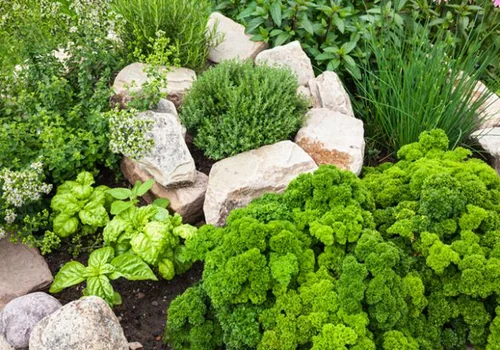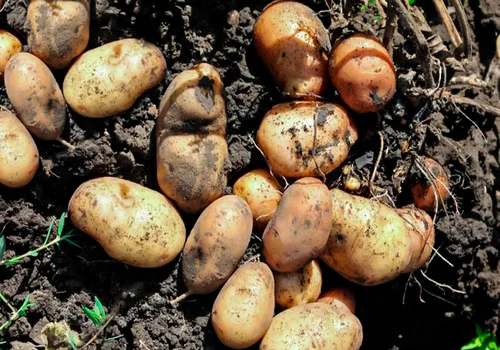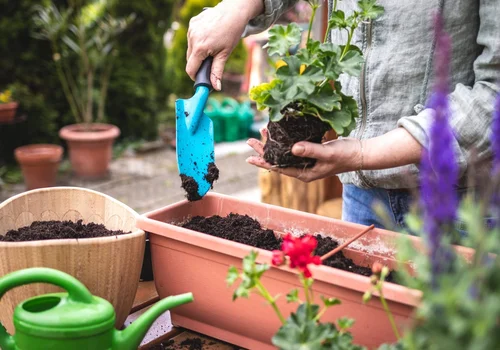Gardening enthusiasts are always searching for innovative ways to make the most out of limited space. One such creative solution is turning the roof of a shed into a fully functional garden. Joel, a passionate gardener and carpenter, has taken his gardening to new heights by transforming the roof of his shed into a green oasis. This article explores the benefits, challenges, and methods involved in creating a rooftop garden, offering tips for gardeners considering this ingenious approach.
Why Build a Rooftop Garden?
Maximizing Space
Joel’s initial motivation was simple: he didn’t want to lose valuable garden space. By building a structure like a shed, the footprint of the garden is reduced. However, by utilizing the roof, that lost space is reclaimed, ensuring no land is wasted. The concept is ingenious, providing an eco-friendly solution that not only preserves space but also enhances the garden’s overall appeal.
Aesthetic Appeal and Environmental Benefits
A rooftop garden adds aesthetic value to any outdoor space, giving it a unique charm. Furthermore, green roofs offer several environmental benefits, such as improved insulation, reducing the need for artificial heating and cooling, and helping to mitigate urban heat islands. Joel’s garden, filled with wild strawberries, grasses, and other plants, genuinely feels like an extension of the ground-level garden.
Structural Considerations for a Rooftop Garden
Ensuring Stability
Building a garden on top of a structure requires careful planning, particularly regarding weight distribution. As a carpenter, Joel knew he had to consider the weight of the soil, water, and plants to avoid structural damage. It’s essential to consult tables that outline the appropriate wood sizes for different weights when constructing such a space. Proper research and planning are crucial to avoid overloading the roof.
Soil Depth and Weight
Joel’s rooftop garden features around 100mm (4 inches) of soil covering the entire roof. This foundation not only protects the roof’s membrane but also retains water, which is essential for plant growth. In areas where raised beds are used, the soil depth increases to around 8 inches, allowing for the cultivation of a wider variety of plants. If a gardener can achieve a soil depth of around a foot, the options for plant types expand considerably.
Plant Selection for Rooftop Gardens
Choosing Resilient Plants
Due to the exposure of rooftop gardens to elements like wind and harsh sunlight, selecting resilient plants is essential. Joel’s garden includes a variety of low-growing crops like tomatoes, which are less susceptible to wind damage. Grasses also help break the wind, creating a more favorable environment for other plants. Each year, Joel adapts his plant choices based on what thrives in the conditions, a practice all good gardeners follow.
Perennials and Soft Fruits
In addition to annual crops, Joel has included perennials such as herbs and soft fruits like jostaberries. These plants are well-suited to withstand the wind and other rooftop conditions. The jostaberries, a cross between a gooseberry and a blackcurrant, have thrived in Joel’s garden, offering delicious fruit with a unique flavor profile that combines sweetness with a mild tartness.
Managing Water and Irrigation on a Rooftop Garden
Water Preservation
Watering a rooftop garden, especially in dry climates, can be challenging. Joel emphasizes the importance of preserving water. He has installed an irrigation system that he uses sparingly, saving it for emergencies. Additionally, he collects rainwater in a tin bath on the roof, which helps during particularly dry periods.
Mulching and Soil Maintenance
To keep the soil healthy and retain moisture, Joel relies heavily on mulching and adding organic matter each year. This practice is essential for rooftop gardens, where the soil can dry out quickly due to exposure to the sun and wind. By continuously enriching the soil, gardeners can ensure their plants receive the nutrients they need to thrive.
Dealing with Pests in a Rooftop Garden
Managing Snails and Other Pests
One surprising challenge Joel faces is the relentless presence of snails. Despite being several feet above ground, snails still find their way into the garden. Joel prefers to maintain biodiversity in his garden, refraining from using insecticides. Instead, he encourages natural predators, such as frogs from his pond, to keep pests in check. When necessary, he manually removes snails and relocates them to nearby parks.
Encouraging Pollinators
Joel has also incorporated flowers throughout his rooftop garden to attract pollinators. These “pollinator highways” help increase biodiversity and support the growth of crops by ensuring plants are well-pollinated. Filling any gaps with flowers not only adds beauty but also promotes a healthy garden ecosystem.
Tips for Building Your Own Rooftop Garden
- Start Small: Begin with low-maintenance plants that are resilient to wind and sunlight. Herbs, grasses, and certain fruits like strawberries are good starting points.
- Consider Soil Depth: Depending on the plants you want to grow, ensure that your rooftop garden has enough soil depth. Raised beds can allow for deeper soil, providing more options for plant varieties.
- Account for Weight: Always check the structural integrity of your roof before adding soil and plants. Use resources to determine the appropriate materials for your garden’s weight.
- Install Irrigation: Watering can be difficult on a rooftop, so consider installing an irrigation system or collecting rainwater to ensure your plants get the moisture they need.
- Encourage Biodiversity: Include flowers to attract pollinators and create a balanced ecosystem. Avoid using chemicals and rely on natural predators to control pests.
Conclusion
Rooftop gardens are an excellent way to make the most out of limited space, offering both aesthetic and environmental benefits. With the right planning, structural considerations, and plant selections, a rooftop garden can thrive. Joel’s rooftop garden serves as a fantastic example of how ingenuity, hard work, and passion for gardening can transform any space into a green oasis.
Frequently Asked Questions
- Is a rooftop garden suitable for all types of plants?
- Not all plants are suitable for rooftop gardens due to wind and sunlight exposure. It’s best to choose hardy, low-growing plants or those that can withstand harsh conditions.
- How much weight can my roof support for a garden?
- This depends on the structure of your roof. Consult a professional or use online resources to determine the weight limit based on your roof’s design and materials.
- Do rooftop gardens require special irrigation systems?
- While not always necessary, an irrigation system can be helpful in dry climates or during extended periods without rain. Rainwater collection is also a sustainable option.
- Can I grow vegetables in a rooftop garden?
- Yes, many vegetables such as tomatoes, lettuces, and herbs can be successfully grown in rooftop gardens. Just ensure you have enough soil depth for root development.
- How do I prevent wind damage in a rooftop garden?
- Choose low-growing, resilient plants and use grasses or other barriers to break the wind. Regularly monitor the plants to ensure they are not getting damaged by harsh conditions.
- What are the benefits of a rooftop garden?
- Rooftop gardens maximize space, improve insulation, reduce the urban heat effect, and provide a peaceful, green environment in urban areas.
- How can I keep pests under control in a rooftop garden?
- Encouraging biodiversity is key. Avoid using pesticides and instead rely on natural predators like birds or frogs to keep pests like snails at bay.





